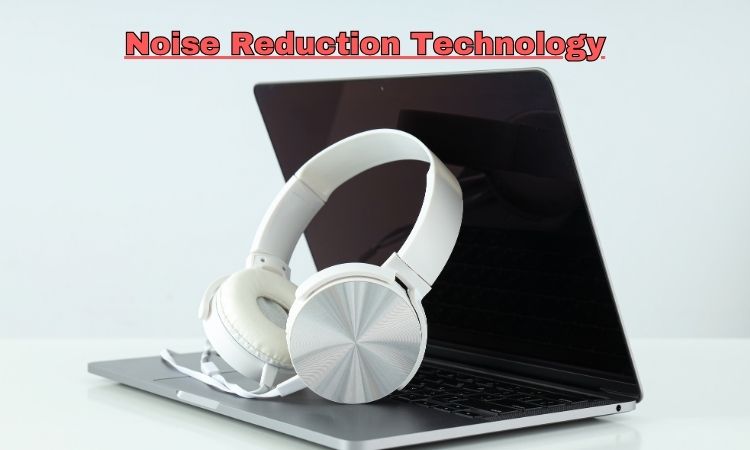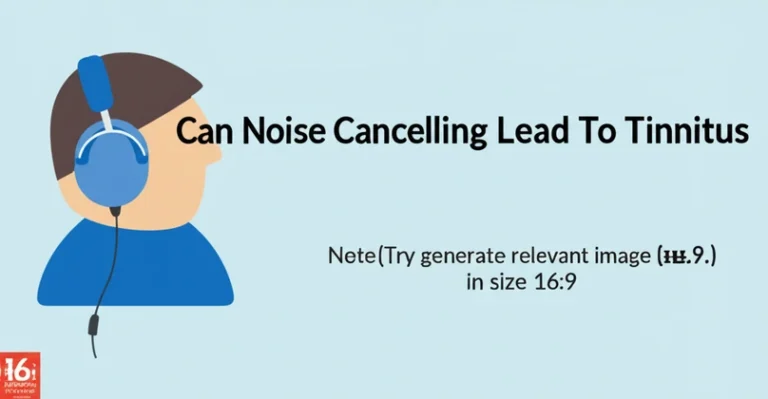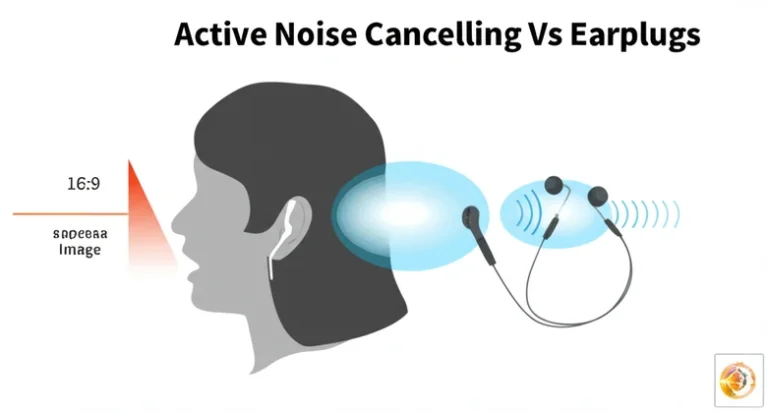
In today’s increasingly noisy world, unwanted sounds infiltrate our lives, disrupting focus, hindering communication, and impacting our overall well-being. From the constant hum of traffic to the chatter of colleagues, noise pollution is a pervasive challenge. Fortunately, advancements in noise reduction technology offer effective solutions to reclaim sonic tranquility and improve our auditory experiences.
This comprehensive guide delves into the intricacies of noise reduction technology, exploring its underlying principles, diverse applications, and the numerous benefits it offers.
Whether you’re seeking to enhance your listening pleasure, improve communication clarity, or create a more peaceful environment, understanding the nuances of noise reduction can empower you to make informed decisions and achieve optimal results.
What is Noise Reduction Technology?
Noise reduction technology encompasses a range of systems, tools, and techniques designed to mitigate or eliminate unwanted background sounds. It leverages principles of acoustics, signal processing, and material science to create quieter environments and enhance audio quality. This technology finds wide-ranging applications across various industries, from telecommunications and entertainment to healthcare and transportation, playing a crucial role in improving communication, enhancing audio experiences, and promoting well-being.
Types of Noise Reduction
- Active Noise Reduction (ANR): ANR employs sophisticated algorithms and microphones to actively counteract external noise.
The system captures incoming sound waves and generates an “anti-noise” wave of equal amplitude but opposite phase. These two waves interfere destructively, effectively canceling out the unwanted noise. ANR is particularly effective against low-frequency, consistent sounds like engine hum or air conditioner noise.
This process involves complex digital signal processing (DSP) to analyze and synthesize the appropriate counter-waves.
- Passive Noise Reduction (PNR): PNR utilizes physical barriers and sound-absorbing materials to block or dampen sound waves. Materials like foam padding, dense fabrics, and specialized insulation are strategically employed to create a buffer against noise. This method is most effective in isolating high-frequency sounds such as speech, sudden loud impacts, and environmental noises.
The effectiveness of PNR depends on the material’s density, thickness, and sound absorption coefficient.
- Digital Signal Processing (DSP): DSP involves manipulating audio signals digitally to enhance desired sounds and suppress unwanted noise. Techniques like spectral subtraction and adaptive filtering are used to isolate and remove specific noise frequencies while preserving the integrity of the primary audio source. DSP is widely employed in audio software, communication systems, and professional recording equipment.
Often, a combination of these methods is employed to achieve optimal noise reduction across a broad spectrum of frequencies.
How Does Noise Reduction Technology Work?
Active Noise Reduction
Active noise reduction (ANR) functions by creating an “anti-noise” signal that mirrors the incoming noise but is 180 degrees out of phase.
This requires a microphone to capture the ambient noise and a processing unit to analyze the sound waves and generate the inverse signal. The generated anti-noise is then emitted through a speaker, effectively canceling out the unwanted noise. This technology excels at mitigating consistent, low-frequency sounds.
The effectiveness of ANR can be influenced by factors such as the accuracy of the noise-canceling algorithms, the quality of the microphones and speakers, and the characteristics of the surrounding environment.
Passive Noise Reduction
Passive noise reduction (PNR) relies on the principles of sound absorption and isolation. Sound-absorbing materials, such as foam or acoustic tiles, convert sound energy into heat, effectively reducing the intensity of sound waves. Sound isolation involves using dense materials to block the transmission of sound waves.
This method is simpler and more cost-effective than ANR, but it is typically less effective against low-frequency sounds. The effectiveness of PNR depends heavily on the properties of the materials used and their implementation within a given environment.
Applications of Noise Reduction Technology
Telecommunications
Noise reduction technology is essential for clear communication, especially in noisy environments. It’s used in call centers, online meetings, and voice-over IP systems to eliminate background noise, ensuring clear conversations.
This improves productivity and reduces listener fatigue.
Entertainment
From noise-canceling headphones for immersive music listening to advanced audio processing in movie theaters, noise reduction enhances entertainment experiences. In music production, it isolates instruments and vocals, leading to higher quality recordings. For gaming, it helps create realistic and engaging soundscapes.
Healthcare
Noise reduction plays a vital role in creating quieter hospital environments.
It contributes to patient recovery by minimizing disruptive sounds and helps medical professionals concentrate. Noise-reducing designs for medical equipment also contribute to a calmer and more therapeutic atmosphere.
Travel
Noise-canceling headphones and earplugs are indispensable for travelers seeking respite from the drone of airplane engines, train noise, or bustling crowds. This technology improves comfort during journeys, allowing for relaxation and focus, even in noisy environments.
Benefits of Noise Reduction Technology
- Improved Communication: Clearer conversations in various settings.
- Enhanced Audio Clarity: High-quality sound for entertainment and professional use.
- Reduced Stress: Quieter environments contribute to improved mental well-being.
- Better Focus: Minimized distractions lead to increased concentration.
- Hearing Protection: Reduced exposure to loud noises minimizes the risk of hearing damage.
Choosing the Right Noise Reduction Solution
Key Factors to Consider
- Purpose: Personal use, professional needs, or entertainment purposes.
- Type of Noise: Identify the dominant noise frequencies (low, mid, or high) to choose the most effective technology.
Consistent, low-frequency noises are better addressed with ANR, while high-frequency, intermittent noises are better suited for PNR.
- Environment: Consider the setting where noise reduction will be applied (office, home, travel) to determine the most suitable solution.
- Budget: Balance cost and performance based on individual needs and expectations.
- Comfort and Fit: (For headphones and earplugs) Consider factors like earcup size, headband pressure, and ear tip material to ensure long-term comfort.
- Features: (For software and devices) Look for features like adjustable noise cancellation levels, transparency modes, voice control, and integration with other devices.
Popular Options
- Headphones: Over-ear, on-ear, and in-ear options with varying levels of noise cancellation and features.
- Software: Applications for computers and smartphones that offer noise reduction during video calls and recordings.
- Built-in Features: Many communication platforms and devices now include integrated noise suppression capabilities.
- Soundproofing Materials: Acoustic panels, foam insulation, and sound-dampening curtains for room treatment.
FAQ
How effective is noise reduction technology?
The effectiveness varies depending on the type of noise and the technology used. ANR is highly effective for consistent, low-frequency sounds, while PNR is better for high-frequency noises. Modern solutions offer significant improvements in audio clarity, but complete noise elimination is not always achievable.
Factors like the environment and the quality of the equipment also play a role.
Can noise reduction work outdoors?
Yes, but its effectiveness depends on the environment and the specific technology used. ANR can reduce consistent noises like traffic or wind, while PNR can offer some protection against sudden, loud sounds. However, highly variable and unpredictable outdoor noises are more challenging to mitigate effectively.
Is noise reduction technology affordable?
Options range from free software to high-end headphones and professional soundproofing installations.
Many affordable solutions provide excellent results for everyday use, making noise reduction accessible to a wide range of users. The cost depends on the features, performance, and intended application.
Conclusion
Noise reduction technology has become integral to modern life, offering a range of solutions to combat noise pollution and enhance audio experiences. From improving communication in professional settings to creating immersive entertainment experiences and fostering quieter environments for healing and relaxation, the applications and benefits of this technology are far-reaching.
As research and development continue to advance, we can anticipate even more sophisticated and accessible noise reduction solutions that will further enhance our auditory world and improve our quality of life.






